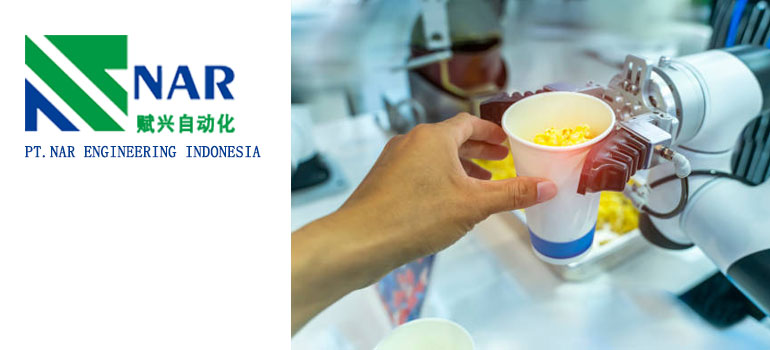Summary:
All you need to know about food robotics
The Evolution of Robotics in the Food Industry
Application of food robotics
Application advantages in the food-Industry
The Evolution of Robotics in the Food Industry
In the food industry, the application of robotics has become a pivotal factor in production. Robots not only enhance productivity but also improve product quality and safety. Let’s take a journey through the development of robotics in the food industry, witnessing how they have evolved from simple mechanization to intelligent collaboration.
Early Mechanization: At the beginning of the 20th century, the food industry began exploring mechanized production. Through the use of conveyor belts and basic mechanical devices, tasks such as packaging and sorting became automated. This initial phase laid the foundation for future developments.
Introduction of Digital Control Systems: With advancements in computer technology, the 1960s and 1970s witnessed the application of digital control systems (DCS) in food industry robotics. DCS enabled robots to perform tasks with greater precision and possess a certain level of intelligence and automation capabilities. Robots on production lines became more programmable and flexible.
Adoption of Vision Systems: Entering the 1980s and 1990s, the development of computer vision technology allowed food industry robots to be equipped with vision systems. These systems could detect and recognize the shape, size, and color of food products, enabling more advanced tasks such as sorting and quality control.
Advancements in Perception and Dexterity: In recent years, significant progress has been made in the areas of perception and dexterity for food industry robots. Through the utilization of sensors and advanced algorithms, robots are now capable of perceiving characteristics such as temperature, humidity, and texture of food items. This enables them to execute cooking and processing tasks more effectively.
Rise of Collaborative Robots: Most recently, collaborative robots have emerged as a major trend in the food industry. These robots can safely work alongside human operators, thanks to sensors and advanced safety control systems. This human-robot collaboration model improves production efficiency and flexibility.
The development of robotics in the food industry has progressed from simple mechanization to digital control systems, vision systems, advancements in perception and dexterity, and the rise of collaborative robots. These technological advancements have enabled the food industry to achieve higher efficiency, safety, and sustainability in production processes.
Application of food robotics

With the development of technology, food robots have been integrated into many aspects of the food industry. Including the following points:
Packaging and palletizing
Packaging and palletizing are the most fundamental applications of food robots. Robots load food into containers and packaging paper.
Meat processing:
Meat processing requires processing in a refrigerated environment, and staff are not suitable for working in this environment for long periods of time. But robots can work uninterrupted in this environment.
Meat processing also needs to pay attention to food contamination, as operators may carry bacteria that can contaminate the food; But food robots can complete their work through disinfection.
Food robot processing can efficiently complete tasks through program settings.
Food industry services and meal delivery
Robots are gradually being introduced into the catering industry, which can complete a series of operations from welcoming customers, ordering meals, to delivering meals to the dining table.
In a certain environment, setting up a robot program can complete the function of delivering meals. Each robot will be equipped with cameras and alarms, which can be remotely controlled to complete meal delivery work.
Food robots can be customized according to needs to complete the required tasks.
Application advantages in the food industry
Integrating robot technology into food processing is widely applied. Robot technology can achieve work faster than humans. Especially for robots designed to handle harsh and extreme working conditions, safety and health issues are not major issues.
They are particularly useful when performing repetitive processes. In addition, robots can significantly reduce production costs by increasing production without the need for rest or training at all. Here are many advantages of introducing robots in the food industry
- Reduce the demand for workers.
- The ability of human workers to manually execute challenging tasks and programs.
- Reduce work-related injuries.
- Make it safer and improve productivity.
- Improvement of final product quality.
- l Improve the accuracy and speed of order fulfillment.
- Reduce costs.
- Increase normal operating time.
On the other hand, a major challenge in applying robotics technology to the food industry arises from determining that all raw materials entering the pipeline may not have standard dimensions that can be encoded into the robot.

